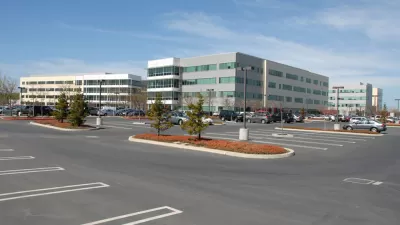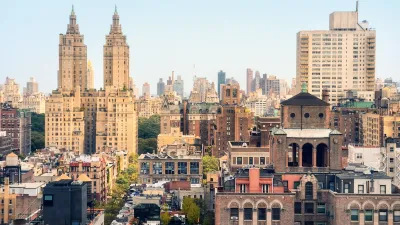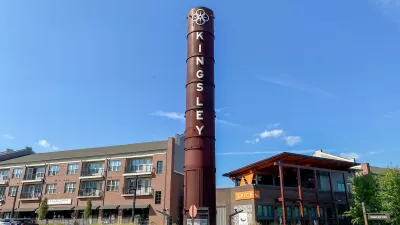With more and more employers downsizing and moving to areas with more urban amenities, large suburban office parks offer an opportunity for increased density and mixed-use development.

Writing in The New York Times, Emily Badger describes the plight of a fading American typology: the suburban office park. “Today suburban office parks have drawn far less attention than downtown offices that are also threatened by remote work. But their decline reflects in some ways a more sweeping and permanent judgment — of once-dominant ideas about where Americans work, how the office should look, and what the suburbs should be.”
According to Badger, “Far from downtowns, there is a different kind of emptiness in suburban settings that were already isolated and lightly populated by design.” While some office parks will likely be modernized and used as offices again, “Other sites will have to become something fundamentally different: schools, senior living centers, apartment complexes, public parks, warehouses.” According to an estimate by commercial real estate firm Jones Lang LaSalle, “57 percent of suburban office space nationwide is so old as to be functionally obsolete.”
However, their massive footprints offer the opportunity for redevelopment with a variety of uses and amenities. “Amid a nationwide housing crisis, many obsolete office parks could be ideal sites for denser housing.” As Badger points out, “Multifamily housing is expensive to build, but the land now being used for suburban parking lots is cheap, so the economics can work out (if the politics do).” To this end, cities and counties must be open to zoning reforms that allow for adaptive reuse of office parks and promote mixed-use development on these sites.
FULL STORY: Lonely Last Days in the Suburban Office Park

Planetizen Federal Action Tracker
A weekly monitor of how Trump’s orders and actions are impacting planners and planning in America.

Congressman Proposes Bill to Rename DC Metro “Trump Train”
The Make Autorail Great Again Act would withhold federal funding to the system until the Washington Metropolitan Area Transit Authority (WMATA), rebrands as the Washington Metropolitan Authority for Greater Access (WMAGA).

DARTSpace Platform Streamlines Dallas TOD Application Process
The Dallas transit agency hopes a shorter permitting timeline will boost transit-oriented development around rail stations.

San Francisco's School District Spent $105M To Build Affordable Housing for Teachers — And That's Just the Beginning
SFUSD joins a growing list of school districts using their land holdings to address housing affordability challenges faced by their own employees.

Car-Centric LA Suburb Looks to a Train-Oriented Future
City leaders in Rancho Cucamonga, the future western terminus of the Brightline West rail line to Las Vegas, want to reimagine the city as a transit-oriented, pedestrian-friendly community.

New Alaska Bitcoin Mine Would Burn as Much Energy as the State’s Largest Coal Plant
Fueled by “stranded” natural gas, the startup hopes to become the largest in the US, and to make Alaska an industry center.
Urban Design for Planners 1: Software Tools
This six-course series explores essential urban design concepts using open source software and equips planners with the tools they need to participate fully in the urban design process.
Planning for Universal Design
Learn the tools for implementing Universal Design in planning regulations.
Municipality of Princeton
Roanoke Valley-Alleghany Regional Commission
City of Mt Shasta
City of Camden Redevelopment Agency
City of Astoria
Transportation Research & Education Center (TREC) at Portland State University
US High Speed Rail Association
City of Camden Redevelopment Agency
Municipality of Princeton (NJ)





























